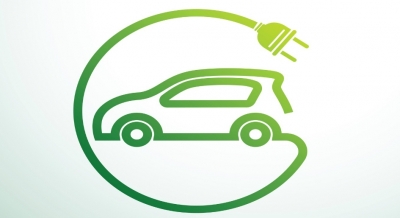Bringing back 'early bird incentives' for e-vehicles lucrative: Report
By IANS | Published: April 20, 2022 07:15 PM2022-04-20T19:15:03+5:302022-04-20T19:30:06+5:30
New Delhi, April 20 Reintroducing the early bird subsidy offered under the Delhi EV Policy 2021 will bring ...

Bringing back 'early bird incentives' for e-vehicles lucrative: Report
New Delhi, April 20 Reintroducing the early bird subsidy offered under the Delhi EV Policy 2021 will bring the upfront cost of five new EV models to be launched in 2022 within the price range of Rs 5 to 15 lakh. This is an important price segment for mass adoption and represents nearly 75 per cent of all vehicle sales, says a report.
Delhi's EV policy offered the first 1,000 electric four-wheelers an early bird incentive of a maximum Rs 150,000 over and above other exemptions. This incentive was applicable to indigenous vehicles with advanced batteries listed as being eligible under FAME II, says report by Delhi-based communications initiative, Climate Trends.
This subsidy was discontinued in November 2021 after the first 1,000 sales, and EV four-wheelers in Delhi now only receive exemption from road tax and registration.
Charu Lata, Lead Consultant, Electric Mobility and Clean Energy Access, Natural Resources Defence Council (NRDC), says: "Among all Indian states, Delhi has made significant progress in advancing electric mobility. However, the state still battles with high air pollution levels.
"Support to electrify four-wheelers, which account for 28 per cent of the vehicles on Delhi roads, can help tackle the challenge at hand and also contribute in meeting the overall climate goals."
The report aims to highlight the effect of removal of Delhi's early bird subsidy on costs of ownership of EVs, and by extension its effect on consumer choice.
It shows the total cost of ownership of five EV variants, with support of Delhi's early bird subsidy, would be 35-65 per cent cheaper in the long run than their ICE counterparts.
For example, the famous Tata Nexon xz+ with the Delhi early bird subsidy is 36.9 per cent cheaper to own and operate over six years, than its petrol counterpart.
The combination of lowered upfront cost, lower total cost of ownership and various EV models to choose from, can play a critical role in boosting four-wheeler EV sales in the city, which are lagging behind at a mere 1,952 vehicles in 2021.
The report presents international best practices from countries like China, Japan, Norway and Germany, where EVs have become a mainstream choice among consumers.
All these countries relied strongly on purchase incentives and subsidies to drive demand for EVs till the ecosystem became robust enough to drive sales.
It concludes that subsidy support is a significant factor for the private adoption of EV four-wheelers until price parity is reached.
Aarti Khosla, Director, Climate Trends, told : "Delhi is a strong market for private cars, and has the highest four-wheeler sales in the country. Our report shows that offering incentives to consumers under Delhi's EV policy will bring down the upfront cost of several new EV four-wheelers within a comfortable price range for an average Delhiite looking to buy a car, and significantly reduce the vehicle's total cost of ownership.
"This would definitely make EVs more attractive to end users compared to the ICE counterparts. We have global examples to show that relying on demand side subsidies has helped in making e-mobility a mainstream choice for consumers, especially in the private ownership.
"Close to 28 per cent of all vehicles on Delhi's roads are four-wheelers today, and converting these to electric is critical to bring down air pollution, along with achieving its e-mobility targets."
Given that Delhi and NCR regions have recorded the highest four-wheelers sales in India, re-introducing the early bird incentive will further attract the consumers to opt for EVs over its ICE counterparts.
As the statistics go in the last decade the number of vehicles per 1,000 people has gone up to 643 units, i.e. more than one in every two people own a vehicle, pointing towards the average Delhiites ambition to be a vehicle owner.
Disclaimer: This post has been auto-published from an agency feed without any modifications to the text and has not been reviewed by an editor
Open in app